Blog
15 animals that recovered from being endangered
Read moreThese animals have some of the biggest eyes in the world
Throughout the animal kingdom, we can see examples of how animals have evolved specialised eyes that help them avoid predators, spot prey, see in the dark, and navigate complex surroundings. These 12 animals have some of the biggest eyes found in the animal kingdom or the largest eyes in comparison to their bodies. Learn more about which animals have the largest eye size (in no particular order), their visual capabilities, and their incredible sense of sight.
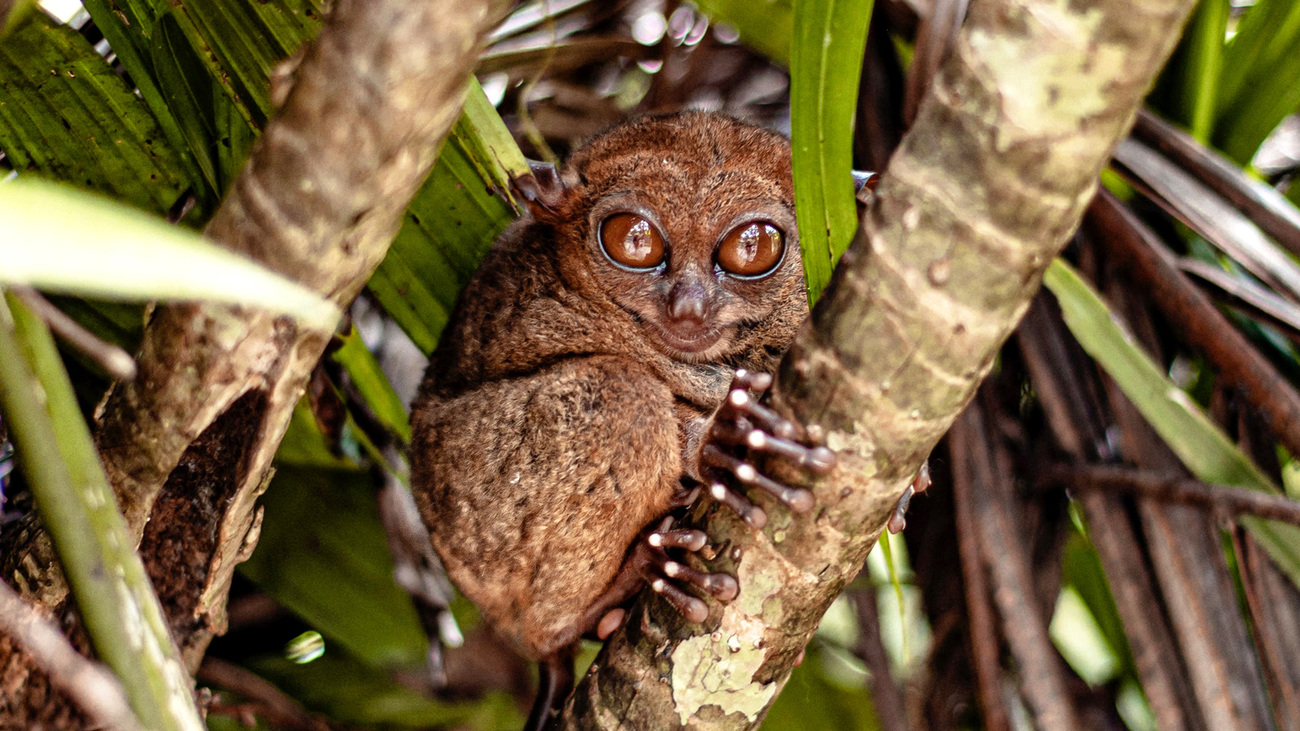
Native to Southeast Asia, tarsiers are tiny primates in the family Tarsiidae. While their bodies are only about 9 to 16 centimetres (3.5 to 6 inches) long—excluding their tail—their eyes are about 1.5 centimetres (0.6 inches) in diameter, which is similar to the size of their brains.
They have the largest eye-to-body ratio of any mammal—human eyes would have to be the size of apples to have the same proportions. Tarsiers’ brains have extremely large visual cortexes, and their heads can rotate 180 degrees. They’re also the only completely carnivorous primates. Tarsiers have highly developed night vision, which allows them to hunt insects and other prey in the dark.
As the largest invertebrates on Earth, colossal squids (Mesonychoteuthis hamiltoni) have the largest eyes in the animal kingdom—even larger than those of whales. Their massive eyes measure about 27 centimetres (almost 11 inches) across, making them about the size of soccer balls. These may be the largest eyes that have ever existed on Earth.
Vision is crucial for these squids, who live in the Southern Ocean at depths of 1,000 metres (3,300 feet) or more. Their habitat is extremely dark, but they need to spot predators and catch prey. To help them see in the dark, their eyes contain light organs, known as photophores, which produce light through a chemical reaction using bacteria. The ability of an animal to produce light is known as bioluminescence.
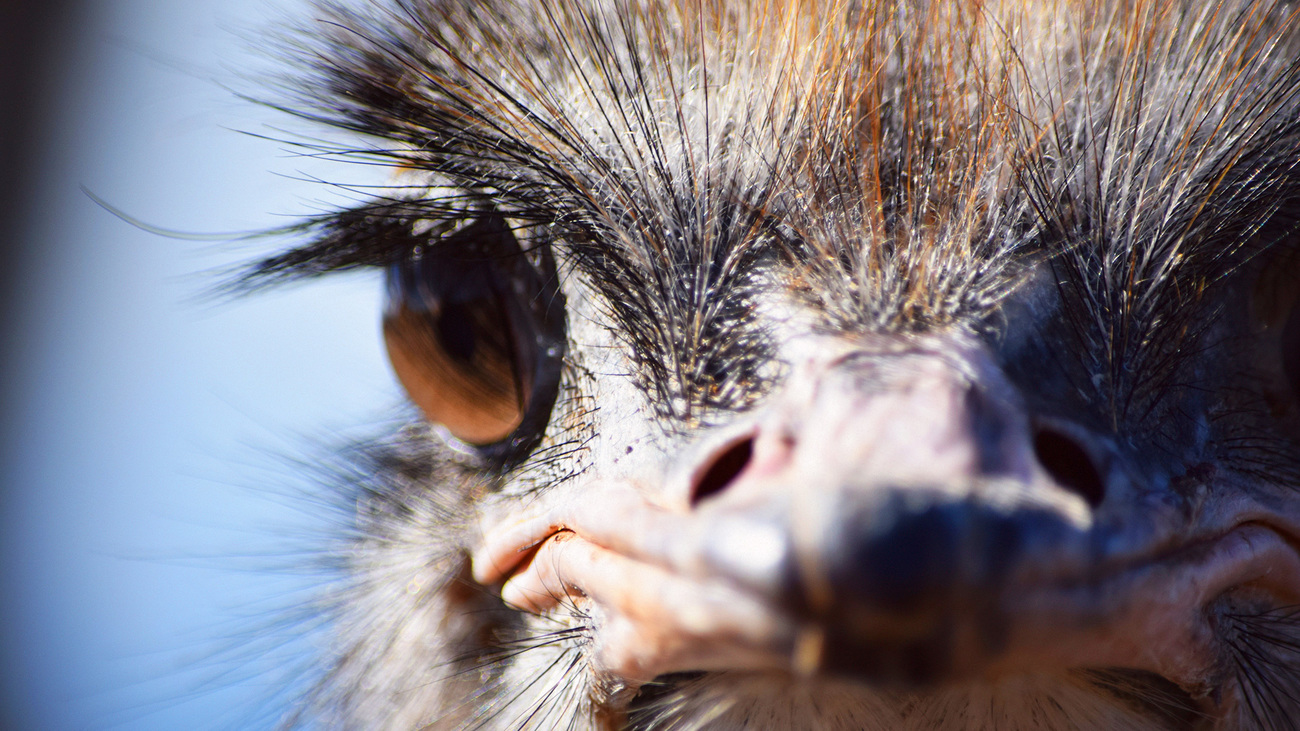
Ostriches (Struthio camelus) have the largest eyes of any bird—in fact, their eyes are the largest of any type of land animal. Ostrich eyes measure about 5 centimetres (2 inches) across, about the size of a billiard ball. Each eye is larger than the ostrich’s brain. They can see as far as 3.5 kilometres (2.2 miles) away.
These African birds have long eyelashes to prevent sand and dust from entering their eyes, much like we do, though their eyes are five times the size of a human’s. Their eyes are also protected by a nictitating membrane, which moves like a windshield wiper, preventing dryness.
Found at depths of 600 to 1,200 metres (about 2,000 to 4,000 feet), the vampire squid (Vampyroteuthis infernalis) looks like a pink, cloaked figure—or like an umbrella—flying through the sky as it swims through the deep ocean. With eyes 2.5 centimetres (1 inch) long, these peculiar-looking creatures have the largest eyes in proportion to body size of any living animal.
Despite its name, the vampire squid is not a squid and does not feed on other animals’ blood. It’s a mollusk in its own order, Vampyromorphida, and it does not chase prey, opting instead to float around and scavenge for zooplankton and marine snow—which is not crystallised water, but is rather the mucus, excrement, and particles of dead animals. This makes the vampire squid a detritivore.
Their eyes might appear blue in photos and videos, but they’re actually clear. The vampire squid’s keen eyesight allows it to find large pieces of marine snow in the darkness of the deep ocean.
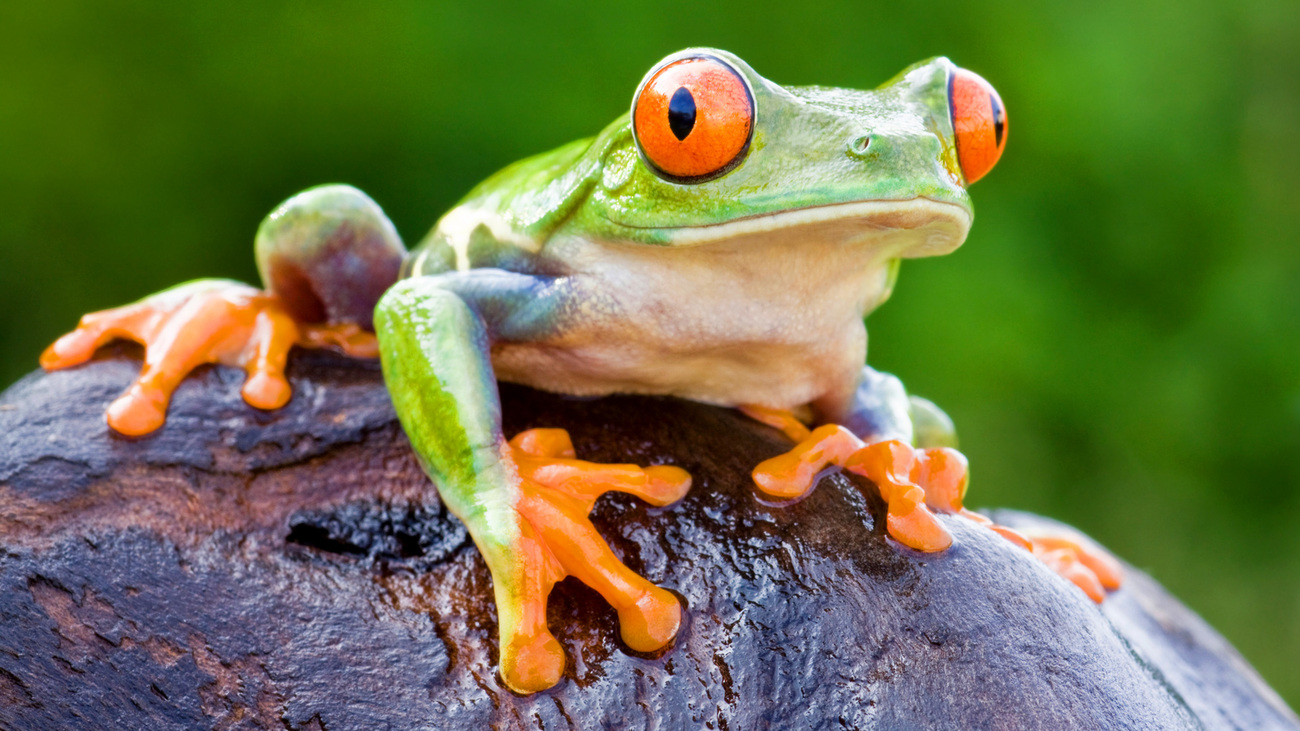
Tree frogs, amphibians of the family Hylidae, have some of the largest eyes in comparison to their bodies of any animal. The red-eyed tree frog (Agalychnis callidryas) is one prominent example, known around the world for its bright green, blue, and yellow skin, orange feet, and striking red eyes with large vertical slits.
The eye size of frogs is theorised to be linked to their habitats—frogs living in caves tend to have small eyes, while the eyes of frogs living in forests tend to be larger. Tree frogs have the largest eyes of all frogs because they need to make quick visual judgements while jumping from tree to tree.
Like ostriches, red-eyed tree frogs have nictitating membranes. They have these in place of true eyelids, which means that even when their eyes are ‘closed’ as they sleep, light can still enter them, so they can still ‘see’ predators and awaken when they come too close.
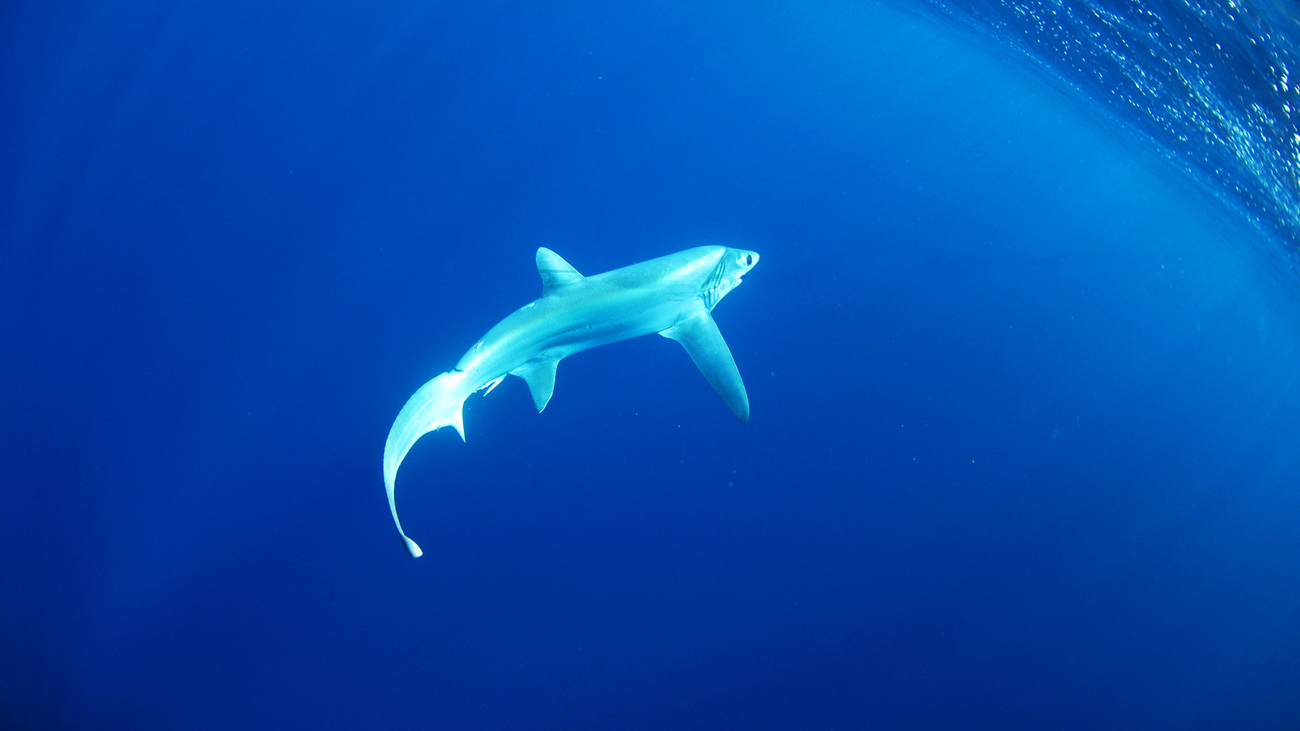
Found in tropical and temperate waters around the world, bigeye thresher sharks (Alopias superciliosus) hold the record for the largest eyes of any living fish species. Their eyes are about 10 centimetres (3.9 inches) long and provide these sharks with advanced vision in low light.
In addition to having great eyesight, bigeye thresher sharks also have tails that function like whips—one lash and they stun their prey, allowing them to capture it with ease. Their diet consists of fish, crabs, squid, and octopus.
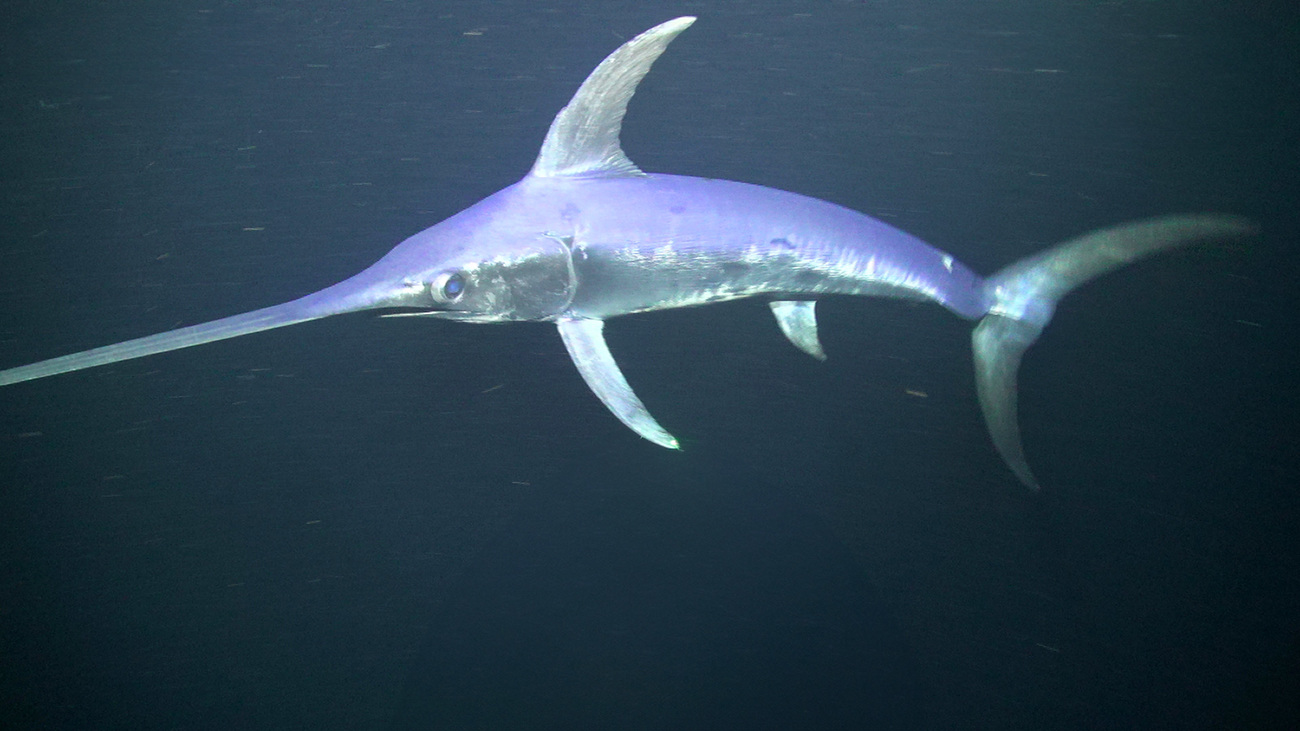
An honourable mention in the fish category are swordfish (Xiphias gladius), whose eyes are about 9 to 10 centimetres (3.5 to 3.9 inches) in diameter, very close to the size of a bigeye thresher shark’s. They can see very well in darker conditions, and their eyes have also evolved to stay warm—they have certain cells in their muscles that can produce heat without shivering. This heat stays concentrated around their eyes, which is beneficial for the swordfish’s ‘wait and sprint’ hunting style. Staying warm in a cold environment like the deep ocean requires a lot of energy, so keeping heat concentrated in one key area of their bodies is more energy efficient than distributing it evenly.
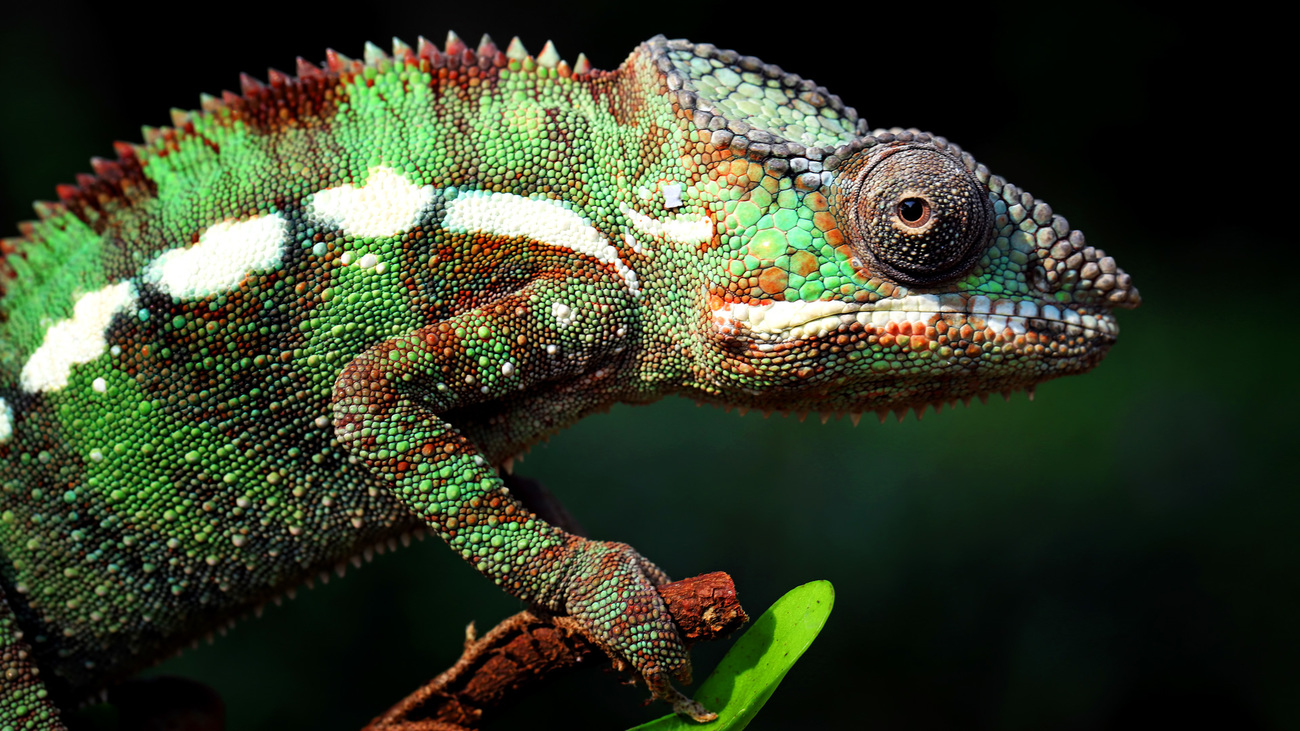
Chameleons have some of the best vision among lizards. Their eyes are some of the largest in proportion to body size of all vertebrates. One example is the veiled chameleon (Chamaeleo calyptratus), whose eyes are about 18 millimetres (0.7 inches) in diameter, compared to its 150-millimetre (5.9-inch) long body.
Unlike other animals, chameleons can move their eyes independently of each other, in many different directions, without moving their heads. Because their eyes protrude out of their heads rather than being more inset in their skulls, they gain an even larger field of view. Their vision is vital for hunting and staying safe from predators.
Chameleons also have a type of third eye, located on the top of their heads. It’s covered by scales, so it’s not easily spotted, and it can only detect violet and blue light.
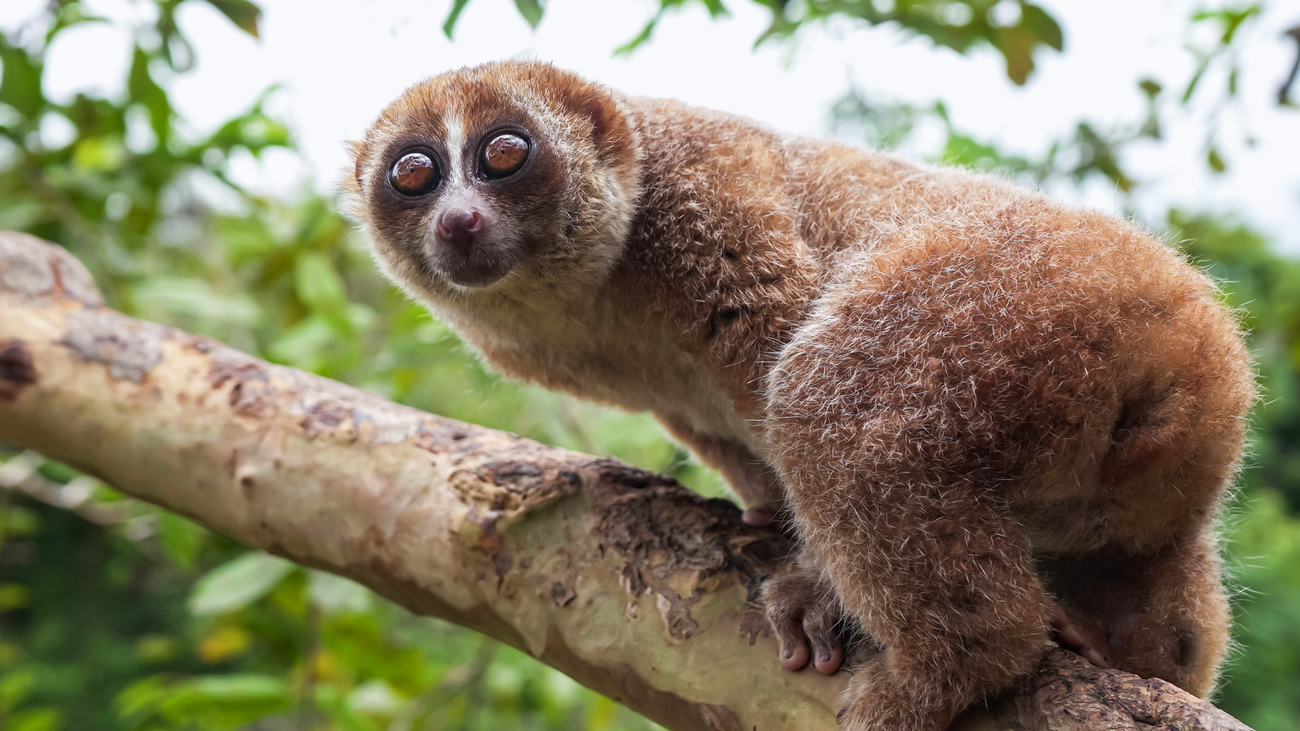
Slow lorises are small, nocturnal primates found in Southeast Asia, and thanks to the cute appearance of their large, round eyes, they have unfortunately been targeted for the exotic pet trade. Though they are protected by law, they are taken from their homes in the wild and trafficked to places where they are sold as pets. As wild animals, they don’t make fitting pets—especially considering they possess a venom strong enough to seriously harm humans.
The pygmy slow loris (Xanthonycticebus pygmaeus, formerly known as Nycticebus pygmaeus) is known to have one of the largest eye sizes in relation to its body size of all primates. Its eyes have a diameter of 14.9 millimetres compared to its cranial width of 35.8 millimetres. The Sunda slow loris (Nycticebus coucang) also has an impressive eye diameter of 15.8 millimetres compared to its cranial width of 45.5 millimetres.
Behind their retinas, slow lorises have a tapetum lucidum, a layer of tissue that reflects light and makes their eyes appear to glow. They have vision even when their surroundings are almost completely dark, thanks to the tapetum lucidum and the fact that their pupils can enlarge extremely wide.

Great horned owls (Bubo virginianus) are easily recognised by their tall ear tufts and bright yellow eyes, which are larger in proportion to their brains than the eyes of any other owls. The striking yellow colour of their irises comes from a rare pigment called xanthopterin. Their eyes constitute up to 5% of their total body weight—for comparison, humans’ eyes are about 0.0003% of our body weight. The eyes of many birds of prey take up about half of their total cranial volume.
Horned owls’ eyes are very well adapted to low-light environments, which is important considering they are nocturnal hunters. They also can constrict their pupils very quickly—in less than 176 milliseconds after a flash of light.
Another interesting fact is that their eyes are not ball-shaped, but tube-shaped. This renders their eyes completely immobile, but this isn’t really an issue considering they can rotate their heads 270 degrees. The shape of their eyes helps with depth perception and allows them to zero in on their prey. Owls’ exceptional vision is one of the reasons why for millennia, humans have associated them with wisdom.
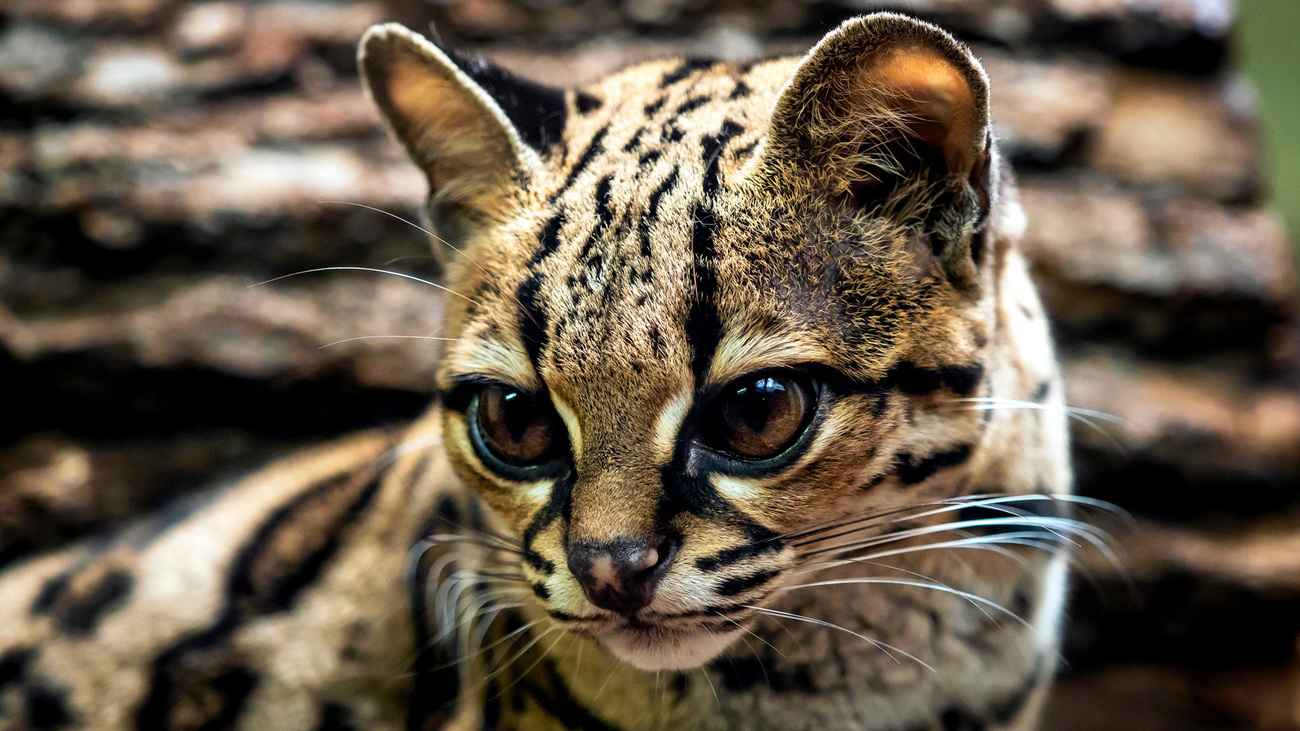
Margay cats (Leopardus wiedii) are small wild cats native to Central and South America with leopard-like fur patterns and wide, dark brown eyes. Margay cats average about 42.5 to 79 centimetres (17 to 31 inches) long, while their ocelot cousins are about 74 to 99 centimetres (29 to 39 inches) long—but despite their small size, margays have larger, more prominent eyes than their relatives. These eyes allow them to see very well at night, which is important because these cats are nocturnal.
In addition to their striking round, brown eyes, margays are also known for their ability to climb trees—while they mostly hunt on the ground, they spend a lot of time in the branches and can stalk prey while climbing. Their large eyes may be adapted for their time spent in the trees.
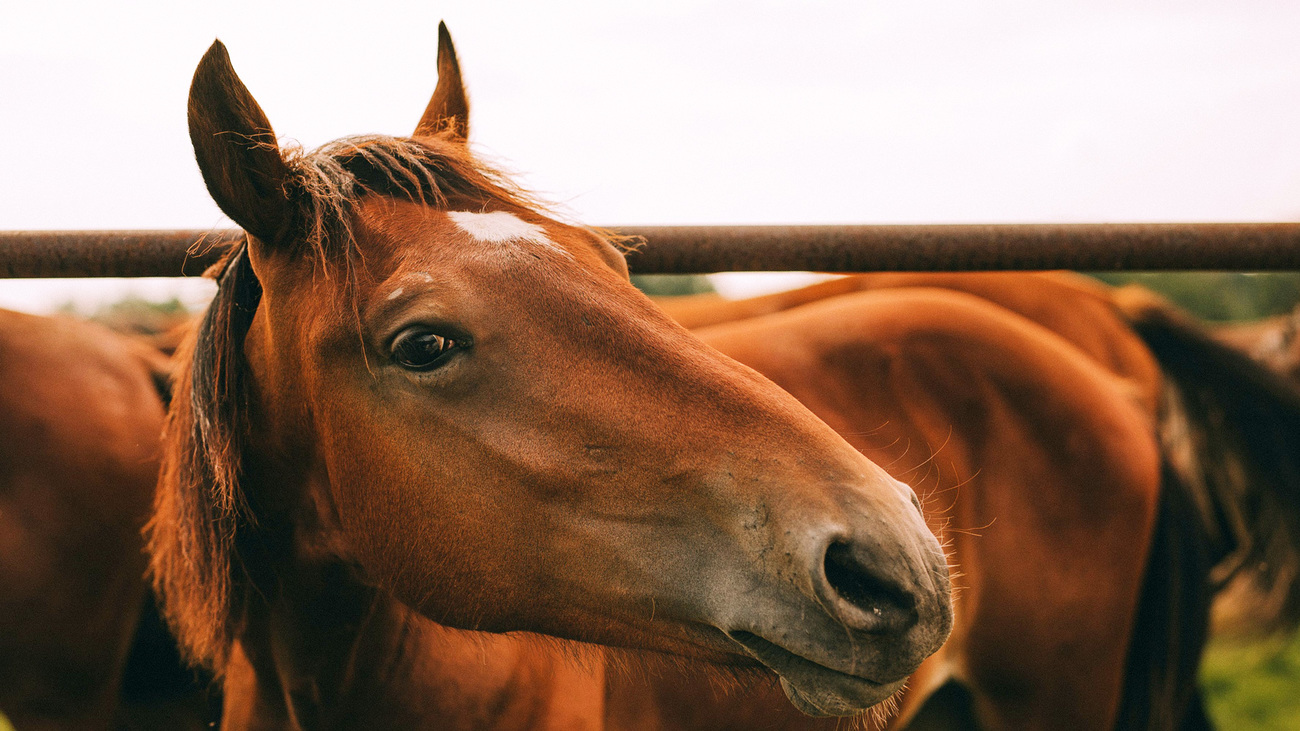
Surprisingly, horses (Equus caballus) have some of the largest eyes of all land mammals. Their eyes are about 5 centimetres (2 inches) in diameter. For comparison, the eyes of elephants—which are much larger animals—are about 3.8 centimetres (1.5 inches) in diameter. Thanks to the size of their eyes, horses see everything about 50% larger than humans do.
Because of how a horse’s eyes are positioned on the sides of its head, it can see almost 360 degrees—although it does have two blind spots, directly in front of and directly behind its head.
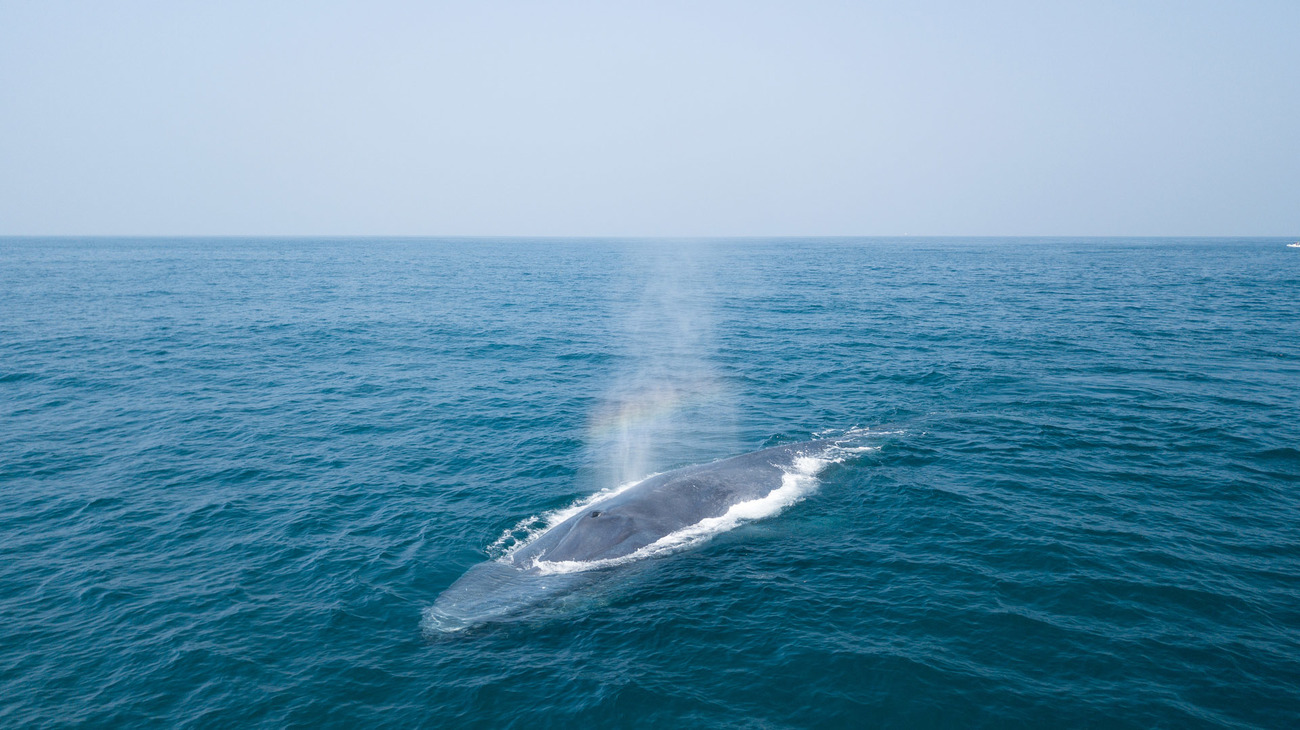
As the largest members of the animal kingdom, blue whales (Balaenoptera musculus) have huge eyes—they’re about 11 centimetres (4.3 inches) in diameter, a bit larger than those of the swordfish and thresher shark. Blue whales—and all other whales—are colourblind. However, they have special adaptations that allow them to see underwater and above the surface, including a curved cornea. Their pupils can easily adapt to changes in light levels, allowing whales to see in the bright sunlight at the water’s surface and in the dark depths of the ocean.
These eyes still pale in comparison to those of the colossal squid, which takes the prize for the largest eyes in the world. In fact, compared to the massive size of the blue whale’s body, its eyes don’t look all that big.
Our work can’t get done without you. Please give what you can to help animals thrive.
Unfortunately, the browser you use is outdated and does not allow you to display the site correctly. Please install any of the modern browsers, for example:
Google Chrome Firefox Safari